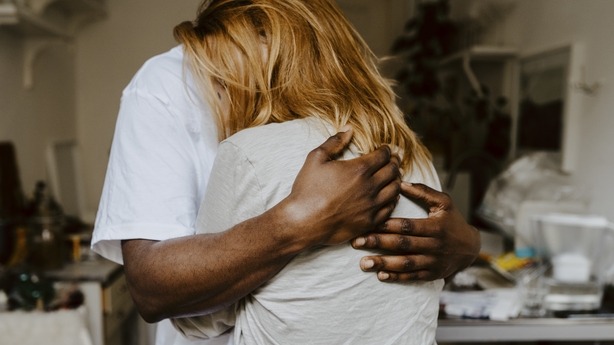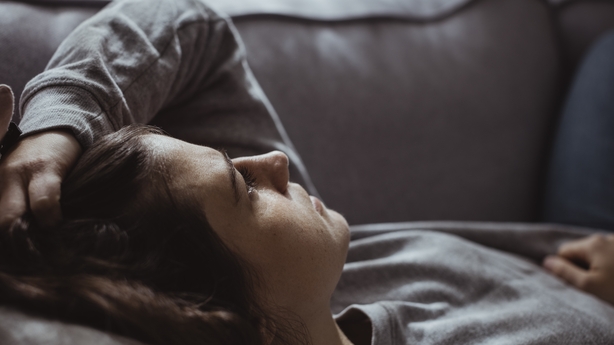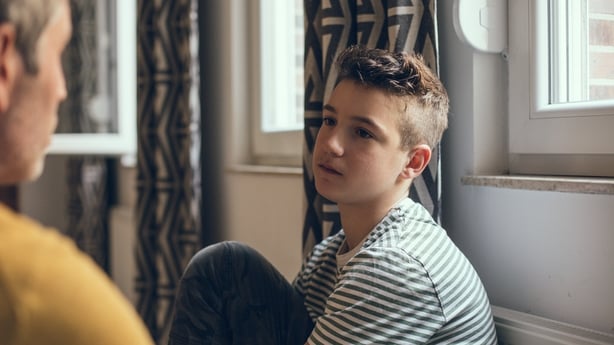Counselling psychologist Niamh Delmar on anxiety, and knowing the difference between anxiety and anxiety disorders.
According to the World Health Organisation, the pandemic triggered a 25% increase in anxiety globally. Anxiety disorders are the most common mental health problems and have been referred to as a "silent epidemic".
According to Mental Health Ireland, one in six people will experience a mental health issue, such as anxiety, every year with that figure steadily rising. People can experience anxiety as a normal fight, flight or freeze response to stress.
Occasional anxiety is part of life. Feeling nervous is a natural reaction to a threatening or challenging event. However, if anxiety is persistent, interferes with daily functioning and is not in response to a real threat, it is more likely to be an anxiety disorder. The excessive worry is intrusive, not in proportion to actual danger and exhausting. Avoidance may feature to avoid the discomfort.

Many people attending with me for therapy have been living with anxiety for years untreated. They have become "used to" their anxiety until it becomes overwhelming. A panic attack is intense and can be so physical that people can end up in A&E or extreme distress, convinced they are having a heart attack, going to collapse, die, can't breathe or are going crazy. The fear of the fear arises as the person dreads a recurrence.
There are different types of anxiety disorders including generalised anxiety disorder, panic disorder, social anxiety, health anxiety and agoraphobia. People describe having difficulty relaxing, sensing doom, overthinking, obsessing or ruminating. Anticipating a future event and predicting the worst possible outcome is distressing. Irritability is a common symptom as the person tends to be easily upset and triggered.
Physiological signs include hyperventilation, shaking, sweating, increased heart rate and sleep and appetite disturbance. As with most mental health conditions, vulnerability to an anxiety disorder is multi-factorial. Biological, psychological and environmental influences interplay – for example, a familial disposition to anxiety, a history of trauma, a build-up of stress, unhealthy lifestyle habits, coping deficits and a particular personality type.
Research has found that shyness and withdrawal in childhood is linked to social anxiety in adolescence and adulthood. Sometimes, there may be an underlying medical condition, such as a thyroid problem. From the latest research we know there is a fear network in the brain driving anxiety. Scientists are continuing to work out how the different regions, such as the amygdala and areas in the frontal lobe work together.

Anxiety disorders are treatable. It is not about getting rid of it, but managing it so it does not intrude and shrink your quality of life.
Assessment
To receive the appropriate and effective interventions, a thorough assessment is needed. This needs to include taking a history, exploring life events, lifestyle, personality and stressors. The level of distress and specific symptoms can reveal the type of anxiety disorder it is, and if there is any co-morbidity.
Awareness
Psychoeducation helps to understand and learn about the disorder. It is useful to be aware of triggers, what helps and what hinders. Know all the internal and external contributing factors exacerbating it. Internals may be aspects of personality such as perfectionism, being highly sensitive and or overthinking. Externals include stressful situations and difficult interactions. Beyond diagnostic labels, there are individual manifestations so self-awareness is key.
Acceptance
Accept that anxiety is part of you, but not all of you. Rather than hide it or fight it, try to work with it. Focus on your non-anxious side and expand it. There is no shame in it. Be as compassionate to yourself as you would be with a physical illness. As hard as it may be, patience is needed.
Cognitive response
Your reaction to anxiety can amplify or ameliorate its negative effects. Watch what you are saying to yourself. Remind yourself it is adrenaline, there is no imminent danger and that you are safe. There is no lion. Differentiate between what is anxiety, what is reality and what is being activated from the past. Past memories lodged in your system can falsely interpret that you are in danger again now. Keep out of your head as much as possible. Be firm with anxiety provoking thoughts such as catastrophising and making predictions. Practice paying less attention to thoughts.

Physical response
Breathing is reassuring and scientifically helps by calming the sympathetic nervous system. Just focusing on the inbreath flowing in deeply and the outbreath going out slowly throughout the day is of benefit. It signals to the brain that this is a false alarm and that there is no emergency. Sensations are transient. Regular movement and exercise have also been shown to have a positive impact on anxiety.
Healthy distractions
Interests and activities can provide healthy mental, physical and creative outlets. Anxiety needs to be reined in and be wrapped in structure and routine. Write a list of what you enjoy or new interests you could pursue, then activate. Healthy habits can be formed daily, no matter how small. For example, less caffeine, less alcohol, less screen time, no recreational drugs, a better sleep routine, more movement and pleasant interactions. Writing is useful to express, identify triggers and record progress.
Mindfulness, therapy and medication
All of these methods can be advantageous in alleviating symptoms, if used appropriately. However, people need some grounding before they may feel ready to engage in guided meditation. Awareness of the breath, releasing tension in the body and engaging in all of the senses facilitates present moment living. Apps, such as Headspace, when used used daily, are supportive.
Evidence-based therapy, such as cognitive behavioural therapy, has been shown to yield positive long-term outcomes. A positive and trusting therapeutic relationship is fundamental. Medication may be necessary when symptoms are severe. SSRI antidepressants are usually prescribed, while benzodiazepines, such as Xanax, may be recommended for short periods.
It is important to discuss any concerns with a GP or a Psychiatrist.

Helping someone
Encourage the person to get assessed. Don’t minimise or dismiss their worries and worst case scenarios. Saying "don’t worry" or "calm down" is of little help. While it may not seem logical to you, the fear is real to the person. Try to engage them in healthy distractions and non- anxiety related talk.
At a reasonable pace, initiate steps to expand their world and move from avoidance. Explore what their needs are. Prompt them to use strategies that ease symptoms. Learning about anxiety will impact positively on the person and the dynamic. Supporting someone with an anxiety disorder can be intense so find and implement ways to protect your own mental health.
As so many people describe an onset of anxiety symptomatology in childhood, early intervention is essential. Waiting lists will result in more severity and more intensive treatment needed later on. Mental and physical health could be part of the curriculum from primary school up. All schools need to have an in-house psychologist to help students, teachers and principals.
There is messaging to seek help and talk yet many ask where, when and how? The term 'anxiety’ often trivialises a group of mental health disorders that can intrude significantly on a person’s life and relationships. It is common and treatable, yet goes untreated for some and not accessible or affordable for others.
If you have been affected by issues raised in this story, please visit: www.rte.ie/helplines.

